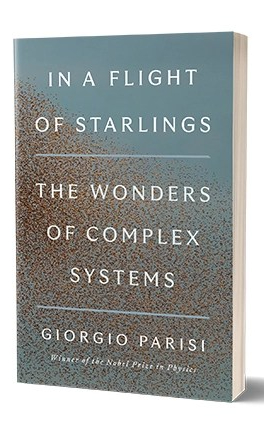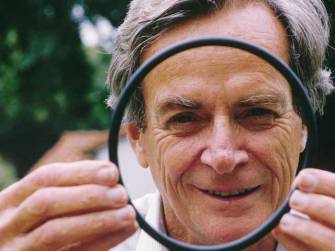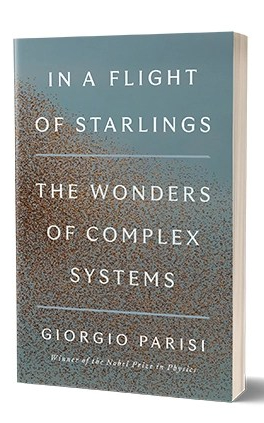Chaos theory has been an immensely popular field of study that took roots in the 1960’s and ’70’s. At its heart, it appeals to the seeker in all of us, putting a limit on how much, in general, we can hope to predict. Why are some things easy to foretell, and why others are difficult, like, famously, the weather. The field also gave rise to some terms that captured public imagination – for instance Emergent behaviour, when the whole is more than the sum of its parts, Strange Attractors, when systems are driven to inevitable but unpredictable outcomes, or the Butterfly Effect, alerting us all, regardless of discipline, to the fact that small changes could have potentially huge consequences.
The impact of this field on almost all areas of science (and the social sciences) had been significant, so the 2021 Nobel prize in Physics, awarded to Parisi, Manabe and Hasselman for their work in the area of complexity, was entirely fitting, bringing much needed public recognition of the value of studying complex systems. By then, one might have argued, it was a no-brainer, given that climate change was beginning to occupy a major part of public discourse, and mankind had begun, belatedly, to realize that we were all in it together, that the climate was related to to the atmosphere, but also to physics, to chemistry, to geology, to economics, to agriculture and to society at large. Solving problems of this nature requires one to embrace the complexity, so to speak – the interrelatedness of these issues is intrinsic to the problem, and it cannot be simplified away.
When the IIT Madras magazine Shastra asked me if I would review Parisi’s book that had been published recently by Penguin, it was therefore another no-brainer. Having read a fair amount by Giorgio Parisi – mostly his scientific papers, truth be told – I was looking forward to learning what he might say in a book that he explicitly wrote for the public at large, In a Flight of Starlings: The Wonders of Complex Systems (Giorgio Parisi, Penguin Press, New York, 2023).
The review appears in the latest Shastra, and much of it is reproduced below, thanks to the kindness of the editors.

In 2021, Giorgio Parisi was awarded the Nobel Prize in physics for the discovery of the interplay of disorder and fluctuations in physical systems from atomic to planetary scales. He shared the prize with Syukuro Manabe and Klaus Hasselmann who earned the prize for the physical modelling of Earth’s climate, quantifying variability and reliably predicting global warming.
This was, arguably, the first award of a Nobel prize in the area of complexity: in their citation, the Foundation starts off by asserting, “Our world is full of complex systems characterised by randomness and disorder.”, and then adding (for Manabe and Hasselman) “One complex system of vital importance to humankind is Earth’s climate”. For Parisi, they said “[…] Giorgio Parisi discovered hidden patterns in disordered complex materials. His discoveries are among the most important contributions to the theory of complex systems.”Given that nonlinear science, complexity, disorder and order have all been areas of my own research interest, I am biased to be sure, but this is a book that is well worth the read. Parisi has, arguably, been one of the most influential (and cerebral) statistical physicists in the world, and the award of the Nobel comes at the tail of a long list of honours, of which there will likely be more.
The different areas that bear his imprimatur are many, the KPZ equation (for Kardar-Parisi-Zhang) in the study of aggregation, the Altarelli-Parisi equations in particle physics, the introduction of the multifractal formalism in turbulence, spin glasses, or the quantitative study of the murmuration of starlings (which feature in the title of the book and its cover).

This set of essays conveys the essence of Parisi’s discoveries to the general reader, for the most part quite successfully. Each fairly short, the chapters in the book fall into three categories. The general theme of complexity in physical systems, namely order and disorder in nature – phase transitions, emergence, spin glasses, flocking behaviour – is discussed in a few. Some personal history, on what it was like to be doing physics in Italy in the 1960’s and ’70’s is shared in a couple of chapters, and in some others Parisi shares his rumination on the nature of creativity, on metaphors in science, and a final word on the meaning of it all, why we do science in the first place. (Spoiler alert: we do it for fun! Parisi quotes Richard Feynman, “Science is like sex: sometimes something useful comes out, but that is not the reason we are doing it.”)
Reading a formal scientific paper by Parisi has never been very easy – there are tools and techniques that he pulls out of unfamiliar hats – but it has often been rewarding. This book is probably the only one that Parisi has written for a lay audience, and is based in part on a set of interviews with the science communicator Anna Parisi (who is not related to him). First published in Italian in 2021 as “In un volo di storni” the book was translated by Simon Carnell, and has an easy conversational style, keeping the frank matter-of-factness of Parisi as he describes how he developed ideas, partly by analogy, partly by metaphor, but mostly but hard work and application.

Parisi’s style is very direct. He describes the problems that interest him scientifically without either exaggerating their importance or dumbing down the language. For instance, the murmuration of starlings is a captivating sight, but there are deep questions that this phenomenon poses: is there a leader or is the behaviour self-organised, how is information transmitted through the flock, and so on. As he describes the work that he and his group carried out, one has a sense of the process of discovery, of what it takes to study such phenomena, and enough detail is shared to make one also feel like a participant and not just a bystander. The same goes for the chapters on phase transitions and spin glasses. The problems are articulated clearly, the history of the area is described in sufficient detail, and the explanations come with a number of diagrams but no equations (keeping Stephen Hawking’s warning in mind no doubt, that for every equation his readership would halve!). The basic ideas of the replica trick or of scale invariance are conveyed in simple language, and without obfuscation.
Although this works admirably in making the physics of complex systems very understandable, one might argue that the more valuable part of the book is the more reflective and analytical set of essays on the value of doing science. These essays were written prior to 2021, and it is clear that Parisi has long occupied an important and influential position as a public intellectual and as a voice for Italian science. Parisi was elected to the American Philosophical Society in 2013, and that seems entirely fitting for a person who has done much to reveal the commonality between diverse areas in physics (or nature), namely the idea of universality. He also speaks unselfconsciously about the powerful role of incubation and intuition in scientific discovery, about the role of the subconscious and “nonverbal” thinking. Some of these ideas are presented in an exploratory and tentative manner, but this only makes the ideas more approachable and adds to the charm.
Science advocacy is another running theme through the essays. Starting off, Parisi makes his position clear, that it is “essential that the public have a fundamental understanding of the practice of science” since “Our generation is on a road fraught with dangers. It is as if we were driving at night: the sciences are our headlights, but it is the responsibility of the driver to not leave the road and to take into account that the headlights have a limited range. Understanding the limitations of the sciences is as important as (or maybe even more than) believing in the value of science: Parisi is an articulate and honest spokesman for best practices in this domain. “Science needs to be defended not just for its practical aspects but for its cultural value” he says in the final pages, emphasising a point that is all too often ignored: it is not just for its value in making life better or in facilitating technological advances, but because it is integral to our modernity.
This is something that, as it happens, I have felt strongly about for a while, and have in fact written about here in this blog, after I had attend a meeting in memory of EMS Namboodripad in Thrissur, Kerala in 2018. This talk appeared in the Indian Academy of Sciences online journal Dialogue: Science, Scientists, and Society as Science in the Public Sphere: Dissemination, Discussion, and Dialogue and eventually as a perspective in the Economic and Political Weekly in 2020 (vol. 60: pages 33–36) titled Science in the public sphere: Obligation and responsibility.

